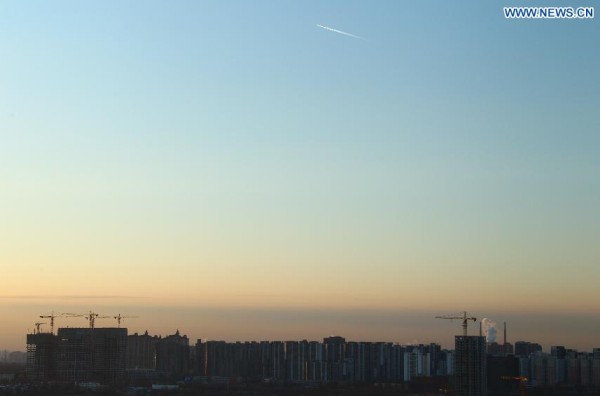

Beijing embraced a blue sky on Tuesday after a day of haze.
 |
|
Photo taken on March 4, 2014 shows a clear sky in Beijing, capital of China. [Photo/Xinhua] |
"I have met some peers today, and we are all concerned about the control of haze. We are discussing what is the most specific and efficient measure for fighting air pollution," said Bi Jianguo, NPC delegate and general manager of Chinese oil refiner Sinopec's Shijiazhuang branch, during a discussion at the ongoing national two sessions.
The pollution was not created in one day, and it will take a long time to tackle the tough work. The affected areas should make joint efforts in combating air pollution. They should also prescribe a remedy for the problem of prevention and control. The source analysis of haze in Beijing, Tianjin and Shijiazhuang will be completed by June, Bi said.
"Since water and air are universal natural resources, no one could handle such a big challenge on their own. Regional cooperation and joint defense and control are the inevitable choices," said Bao Jingling, another NPC delegate and chief engineer at the Tianjin Environmental Protection Bureau.
Bao said that Beijing, Tianjin and Hebei are confronted with the same environmental challenges, and regional cooperation is a must. According to his experience, he said information resources sharing among the three parties is absolutely doable. "The difference in pollution sources accounts for the variety in air pollutant proportion in the different regions, and regional cooperation can provide a good external environment for atmospheric pollution control plans in the region, as well as avoid the predicament of solving one problem in a region only to find another cropping up in the neighborhood."
"It is a great opportunity for coordinated development among Beijing, Tianjin and Hebei to establish a new mechanism of joint cooperation in atmospheric pollution control."
Zhang Dayong, NPC delegate and a researcher on ecology at Beijing Normal University, said the haze made governments realize the importance of regional cooperation and coordination of development. Regional cooperation in atmospheric pollution control is an opportunity for the three regions to adjust the industrial structure, function orientation, regional environmental capacity and scientific and technological resource allocation. It also can help promote regional economic integration, perfect the benefit decision and coordination mechanism, establish a resource and ecology compensation mechanism, form an incentive mechanism for energy saving and emission reduction, in order to achieve green and efficient development.
The State Council, or China's cabinet, outlined 10 measures in June last year, emphasizing regional cooperation in fighting air pollution, such as the Bohai Bay Area, Beijing, Tianjin, and Hebei, Yangtze River Delta, Pearl River Delta and other regions.